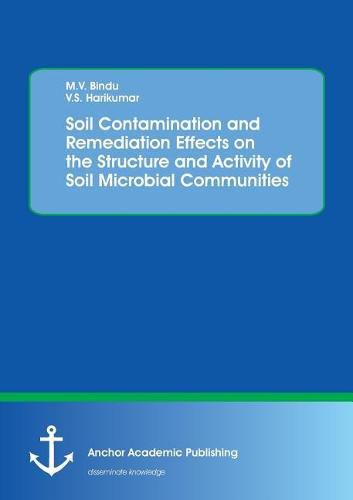Readings Newsletter
Become a Readings Member to make your shopping experience even easier.
Sign in or sign up for free!
You’re not far away from qualifying for FREE standard shipping within Australia
You’ve qualified for FREE standard shipping within Australia
The cart is loading…






This title is printed to order. This book may have been self-published. If so, we cannot guarantee the quality of the content. In the main most books will have gone through the editing process however some may not. We therefore suggest that you be aware of this before ordering this book. If in doubt check either the author or publisher’s details as we are unable to accept any returns unless they are faulty. Please contact us if you have any questions.
Soil can be defined as the space time continuum forming the upper part of the earth’s crust. It is a natural body comprised of solid, liquid and gases that occur on the land surface. Joffe (1949) defined soil as a natural body differentiated into horizons of mineral and organic constituents usually unconsolidated of variable depth, which differs from the parent material below in morphology, physical properties and constitution, chemical properties and composition, and biological characteristics. Soil is one of the most fundamental resources for sustainability and survival. It is one of the most important assets to protect and pass on to future generations. Soil contamination due to anthropogenic and natural sources is increasing day by day because of increasing population, industrialization, and urbanization. Soil is the receptor of many contaminants from various sources. Contamination decreases the quality of the soil and adversely affects soil organisms. For this study, soil samples from thirteen locations contaminated from agricultural, industrial, and organic sources spread over the districts of Alappuzha and Kottayam in Kerala in the south west coast area of India were analyzed to study the changes in soil characteristics and its influence on soil microbial communities and their activities.
$9.00 standard shipping within Australia
FREE standard shipping within Australia for orders over $100.00
Express & International shipping calculated at checkout
This title is printed to order. This book may have been self-published. If so, we cannot guarantee the quality of the content. In the main most books will have gone through the editing process however some may not. We therefore suggest that you be aware of this before ordering this book. If in doubt check either the author or publisher’s details as we are unable to accept any returns unless they are faulty. Please contact us if you have any questions.
Soil can be defined as the space time continuum forming the upper part of the earth’s crust. It is a natural body comprised of solid, liquid and gases that occur on the land surface. Joffe (1949) defined soil as a natural body differentiated into horizons of mineral and organic constituents usually unconsolidated of variable depth, which differs from the parent material below in morphology, physical properties and constitution, chemical properties and composition, and biological characteristics. Soil is one of the most fundamental resources for sustainability and survival. It is one of the most important assets to protect and pass on to future generations. Soil contamination due to anthropogenic and natural sources is increasing day by day because of increasing population, industrialization, and urbanization. Soil is the receptor of many contaminants from various sources. Contamination decreases the quality of the soil and adversely affects soil organisms. For this study, soil samples from thirteen locations contaminated from agricultural, industrial, and organic sources spread over the districts of Alappuzha and Kottayam in Kerala in the south west coast area of India were analyzed to study the changes in soil characteristics and its influence on soil microbial communities and their activities.